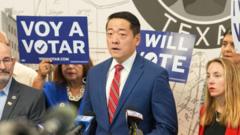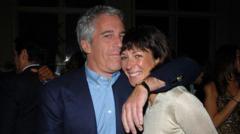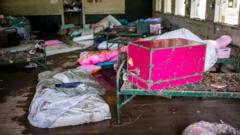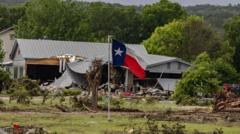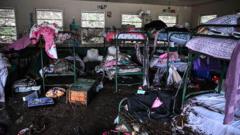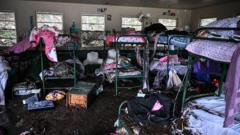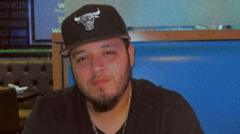A surge of young American men is turning to Russian Orthodoxy, enticed by the promise of a traditional masculine identity and community values, challenging contemporary societal norms in the process.
Rising Appeal of Russian Orthodoxy Among American Men Seeking Traditional Values
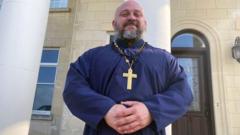
Rising Appeal of Russian Orthodoxy Among American Men Seeking Traditional Values
The growth of Russian Orthodox congregations in the U.S. reflects a shift among young men towards traditional masculinity and conservative values.
In recent months, an increasing number of young American men have been drawn to Russian Orthodox churches, captivated by a vision of masculinity that emphasizes ruggedness and traditional values. One leader at the forefront of this movement is Father Moses McPherson, a priest in the Russian Orthodox Church Outside Russia (ROCOR). He has built a burgeoning online presence while visibly promoting a form of virile masculinity that rejects contemporary notions of gender norms.
Father Moses, whose congregation in Georgetown, Texas, has tripled in size over the past 18 months, uses social media to champion traditional roles he believes have been distorted in modern society. Skinny jeans, folding laundry, and expressing emotion are all ridiculed by him as indicators of a "feminized" culture. In his sermons, he emphasizes the need for men to embrace what he considers "absurd levels of manliness."
Young converts such as Theodore, a software engineer, express discontent with current societal expectations of masculinity. He notes feeling pressures to conform to what is branded as "toxic masculinity," disagreeing with the ideas that men must avoid traditional roles like being the main breadwinner. Many converts, like Theodore, also opt for home-schooling their children, prioritizing family life over career ambitions for women, which aligns with their interpretation of conservative values.
Despite Orthodox Christianity comprising only about one percent of the U.S. population, there has been a noticeable increase in male converts, particularly during and after the pandemic. Indeed, data indicates that Orthodox congregations are now predominantly male, with many newcomers seeking refuge from what they perceive as an overly progressive cultural climate.
This trend is mirrored by broader political sentiments as some convert networks align themselves with anti-woke ideologies. Digital platforms have become pivotal in enabling discussions among male clergy and followers, providing a space where views on masculinity, family, and religious commitments are explored and celebrated.
Father Moses asserts that those seeking traditional paths must reject contraception and embrace larger families, reflecting historical church teachings. Conversely, many of these ideas conflict with mainstream liberal beliefs, resulting in a unique and sometimes controversial interpretation of faith.
As converts such as Buck Johnson, a firefighter and podcaster, engage with this renewal of Orthodox Christianity, they often confront societal stereotypes regarding Russia. Johnson argues that negative depictions of Russia in American media overshadow the country’s rich Christian heritage. Together with an increasing number of Texans, he notes that this religious movement signifies a longing for stability, tradition, and community, which they feel is often missing in contemporary life.
This grassroots movement surrounding Russian Orthodoxy is emblematic of a larger cultural shift as young American men seek refuge in a faith that promises enduring values, fostering robust familial ties, and embracing a community-centered lifestyle, all while navigating a rapidly changing societal landscape.

